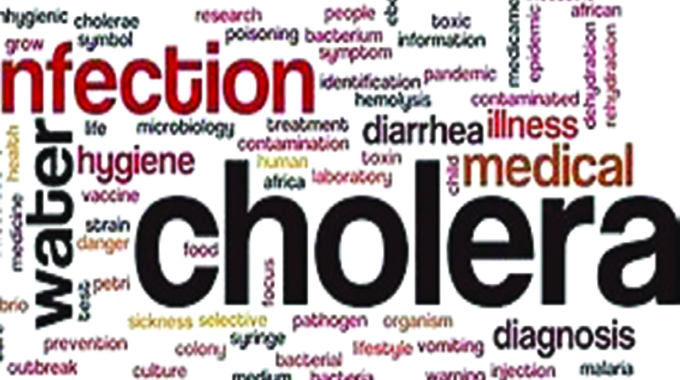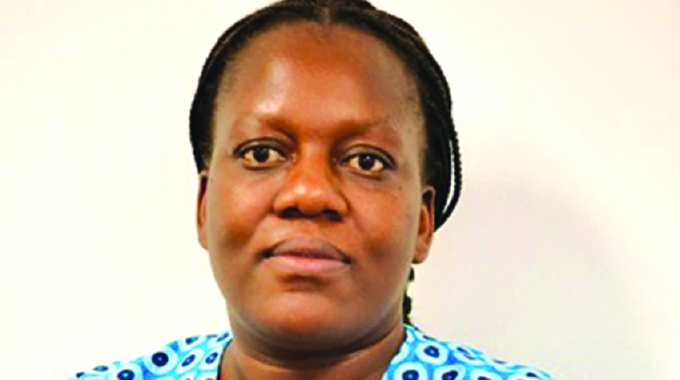Battle against cholera continues

Rumbidzayi Zinyuke
Health Buzz
Since February 12, Zimbabwe has recorded 257 suspected cholera cases, 31 confirmed cases, 221 recoveries and two deaths (as at March 27).
While the figures remain lower than in most African countries that have reported cholera outbreaks in the past year, the fact that eight out of the 10 provinces in Zimbabwe have had cases is of concern.
And according to the Ministry of Health and Child Care, the cases in the affected provinces have no epidemiological link to each other.
Epidemiologically linked cases are those where the patient has had contact with one or more persons who either have or had the disease or have been exposed to a point source of infection or transmission of the agent by the usual modes of transmission is plausible.
A case may be considered epidemiologically linked to a laboratory-confirmed case if at least one case in the chain of transmission is laboratory confirmed.
Although Midlands and Matabeleland provinces have not recorded any suspected or confirmed cases, other provinces such as Harare and Bulawayo have only reported one and two cases respectively since the outbreak began.
Some could consider this an advantage since many of Harare’s water sources, particularly underground, have been known to be contaminated.
Hence an outbreak in these two provinces could see a spike in cases as was the case in 2008 and 2018.
It, therefore, remains important to continuously relay the importance of being vigilant where cholera is concerned.
The better part of the African continent is under siege as the disease wreaks havoc, more so now following the second coming of Cyclone Freddy which hit Madagascar and Malawi hard.
In 2022 alone, at least 29 African countries reported cases of cholera to the World Health Organisation, a notable increase from the average of fewer than 20 countries over the past five years.
For 2023, more than 10 countries have reported cases of cholera with the highest number being reported in Malawi where nearly 40 000 cases and 1 700 deaths have been recorded.
That country’s health ministry recently warned that the figures were likely to rise since Cyclone Freddy destroyed water systems and toilets.
Other countries that have reported cases include DRC, Nigeria, Cameroon, Kenya, Mozambique, Ethiopia, Burundi, Zambia and South Africa.
Now with the high human traffic across Zimbabwe’s borders with its neighbours, there is a high risk of importation of cases into the country especially considering that Zimbabwe is a transit route for most SADC countries.
The Ministry of Health and Child Care continues to issue warnings for people to remain alert to quickly detect cholera cases for faster treatment.
According to the World Health Organisation it is critical for African countries to scale up readiness to quickly detect cases and mount comprehensive and timely responses.
If the current trend continues, WHO estimates that cases could surpass the number recorded in 2021 – the worst year for cholera in Africa in nearly a decade.
Cholera is an acute diarrhoeal infection characterised, in its severe form, by extreme watery diarrhoea and potentially fatal dehydration.
It is caused by the ingestion of food or water contaminated with the bacterium Vibrio cholerae.
Health officials say most of the people affected by cholera will develop only mild or no symptoms with less than 20 percent of ill persons likely to develop acute watery diarrhoea with moderate or severe dehydration. However, these people are at risk for rapid loss of body fluids, dehydration, and death.
Cholera is an easily treatable disease. The majority of people can be treated successfully through prompt administration of oral rehydration solution (ORS). Severely dehydrated patients are at risk of shock and require the rapid administration of intravenous fluids. These patients are also given appropriate antibiotics to diminish the duration of diarrhoea, reduce the volume of rehydration fluids needed, and shorten the amount and duration of V. cholerae excretion in their stool.
However, prevention remains better than cure.
For prevention of cholera, it is important to drink and use safe water or boil it if in doubt. People should also practice hygiene at all times including washing hands before eating, after visiting the toilet and desist from eating unhygienic prepared food.
Use proper latrines or other sanitation systems. Food should be cooked well, eaten while still hot and covered if one is not about to eat.
“If one suspects cholera you are advised to visit the nearest health facility for prompt treatment. If anyone presents with watery diarrhoea immediately report to the nearest health facility or call the Ministry’s Public Health Emergency Operations Centre toll free number 2019 for assistance,” the Ministry stresses.
Despite being easily treatable, cholera remains a global threat due to its high morbidity and mortality in vulnerable populations with a lack of access to adequate health care.
According to experts, the main drivers and challenges for controlling and containing the current cholera outbreaks include climate change, floods and drought.
Africa has for years been experiencing natural disasters such as cyclones which have caused major flooding as well as droughts.
Countries in the southern African region are still experiencing these cyclonic activities and this could be fuelling the current outbreak.
Those countries that experience droughts can experience cholera due to poor access to water and expansion of informal urban settlements among their humanitarian situations.
Other challenges could include delayed surveillance by countries and this calls for the strengthening of systems to be able to collect and record the correct data.
Following the 2018 cholera outbreak in Zimbabwe, the Government launched the oral cholera vaccination programme that targeted affected communities and those that are vulnerable across the country.
The vaccine is a necessary tool in the fight against cholera but global shortages could derail roll out in many African countries who are forced to give one dose of the vaccine instead of two at times.
But while using a single dose instead of two doses will allow more people to be protected in the short term, this strategy has its limitations, as it remains unclear how long immunity will last.
Hence investments into increased production of the vaccine is critical for Africa.
To beat the outbreak, WHO recommends improving access to proper and timely case management of cholera cases, improving access to safe drinking water and sanitation infrastructure, as well as improving infection prevention and control in healthcare facilities.
These measures along with the promotion of preventive hygiene practices and food safety in affected communities are the most effective means of controlling cholera.
In October 2017, the Global Task Force on Cholera Control (GTFCC) partners launched a strategy for cholera control Ending Cholera: A global roadmap to 2030. The country-led strategy aims to reduce cholera deaths by 90 percent and to eliminate cholera in as many as 20 countries by 2030.
The Global Roadmap focuses on three strategies that include early detection and quick response to contain outbreaks, a targeted multi-sectoral approach to prevent cholera recurrence, and an effective mechanism of co-ordination for technical support, advocacy, resource mobilisation, and partnership at local and global levels.
Zimbabwe is part of the countries that endorsed this roadmap and implementation of this will go a long way to ensure the country ends the epidemic.
But public awareness and responsibility remains the key to beating the epidemic.
Feedback: [email protected]










Comments